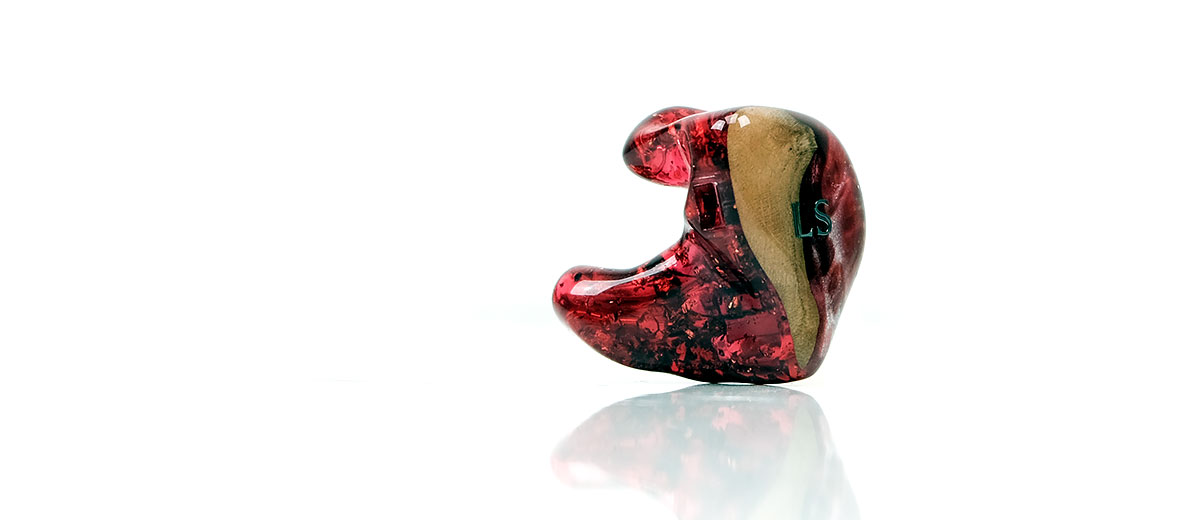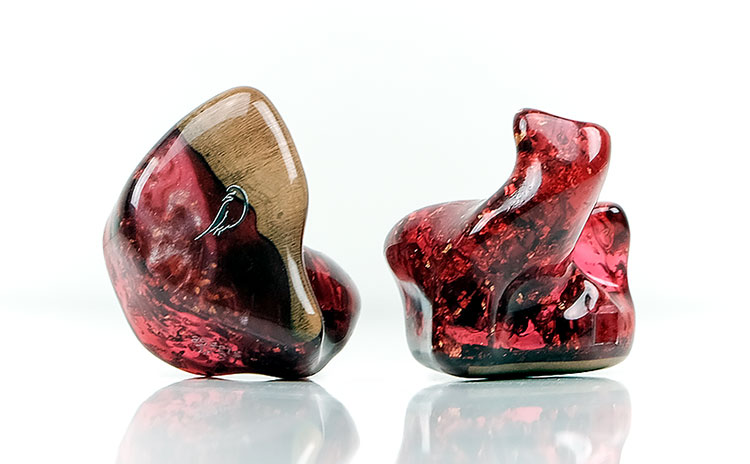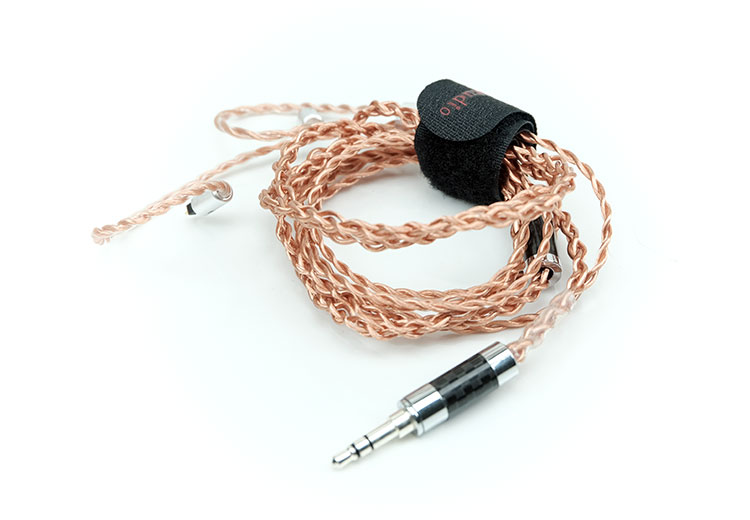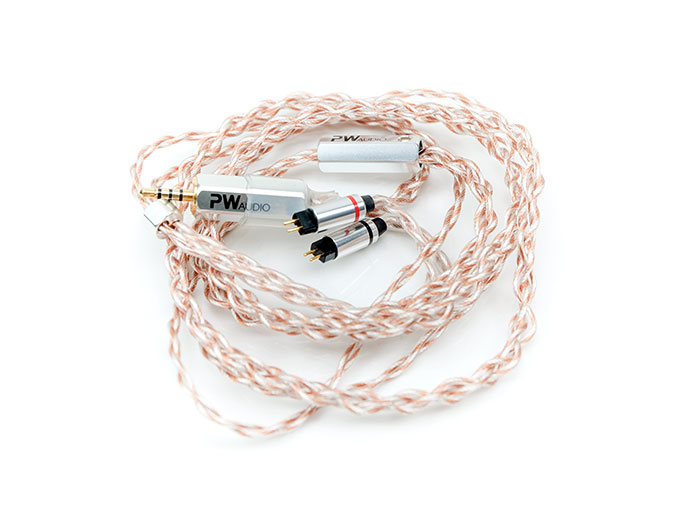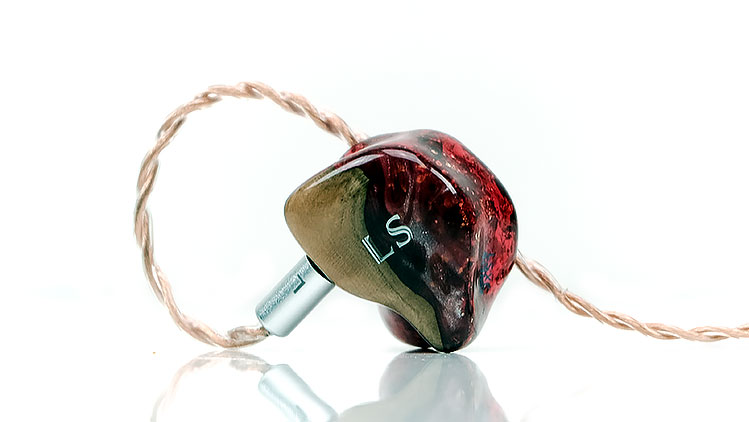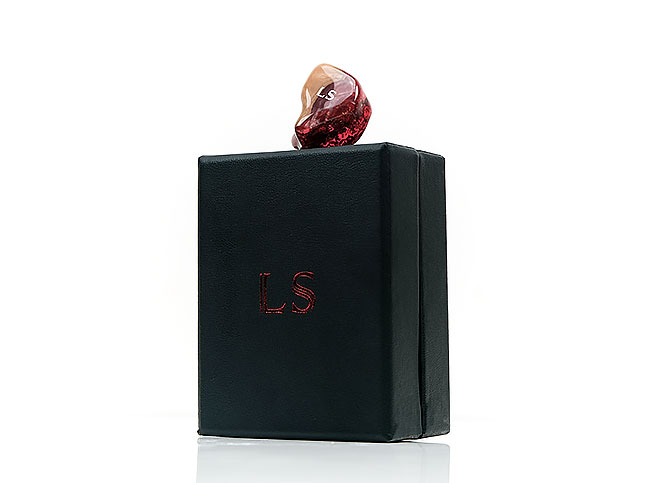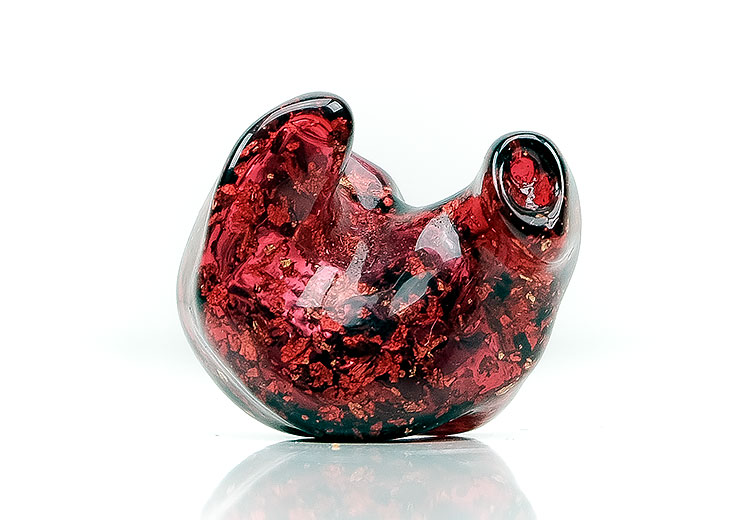Meet the LSXC
Design
The design you see in the pictures is a burgundy two-tone woody faceplate with a gold nugget fill inside a dark red slightly translucent acrylic hollow-body shell. All of this is obtainable via the custom online designer on the Lark Studio website. This is not a special request design. The cost is flat, i.e. the base price of $1699 remains unaffected.
To be honest, I think it looks much better in real life than the online designer tool makes it out to be. I often find pictures of the finished piece to give a much better understanding of how it all comes together. With this option, the final design looks very striking and importantly quite coherent.
The split tone burgundy faceplate is immaculate though bear in mind wood is always a unique material and your final finish may have slight differences to this one.
Finishing
The finishing is to a very high standard indeed which is important for a new company to get right from the start. You will find zero bubbling or imperfections, especially around the sockets where sometimes rough areas can develop. Not so on the LSXC model here which is very smooth.
The polished finish is deep enough though these are not deep-set faceplates so there is a very slight disconnect between the shell and plate in terms of visual aesthetics on the wood side but perfectly seamless looking on the burgundy red side of the plate. The logo artwork on the top is clean also and fairly discreet which I prefer since large prints tend to disrupt the flow of good designs.
Nozzle Design
The LSXC has a multi-bore nozzle design (3). However, the bores are terminated a little deeper into the nozzle and not right at the tip though they do seem a little shallower than Vision Ears or Empire Ears designs. This termination point is where the “horn design” essentially starts.
The open single bore allows Lark to fine-tune and develop the readily mixed sound before it leaves the chamber and into the bore. In doing so, they are able to tweak the LSXC’s high-frequency extension a little further than what is possible with a traditional individual tubed bore design using the same drivers.
Cables & Connectors
Connectors
The LSXC uses a standard 0.78mm 2-pin connector system inside a recessed socket on the top of the shell. As with most, if not all custom designs, the LSXC is an over-the-ear cable fit.
There should not be any fitting issues either for the majority of 2-pin cables. I actually found the female socket of this LSXC to be secure but not overly tight for my own aftermarket cables as well as the supplied stock and the Splendor supplied PS Audio Saladin.
Stock Cable
This is where it gets really interesting with the LSXC because I honestly believe you will get the absolute best out of its performance by opting for the PWAudio Saladin Splendor alternative compared to the stock cable.
The stock cable build quality is very good actually. This is a 1.2m 24 AWG type 2 Litz pure copper wire in a translucent TPE jacket terminated with a 3.5mm TRS jack and 0.78mm 2-pin connectors with similar barrels to Effect Audio.
The jack and y-split barrels are an attractive aluminum alloy and carbon fiber weave and have a reasonably small physical size. The chin cinch is also very nicely finished aluminum ring.
The handling is a little on the stiffer side compared to the latest PVC jackets from Effect Audio and Plussound so it can kink a little from time to time but nothing overly memory retentive. It will not tangle is the short answer. Physical noise on the wire (microphonics) is low below the Y-split barrel and a touch higher above which is entirely normal for a good wire build.
PWAudio “Vanquish” Saladin
Now the performance of the stock cable is quite nice and certainly much better than cheap Plastics One alternatives you get with other CIEM manufacturers. However, it is a touch on the warm and soft side when combined with the tuning of the LSXC. Perhaps too romantic or even harmonic biased when you really want a bit more clarity and snap.
Step forward, the PWAudio “Vanquish” Saladin which brings out a lot more clarity, improved instrumental separation and dynamic range, especially if you go with the balanced termination. You really get to hear just how capable the LSXC is with the Saladin.
The supplied Saladin is a 7-bundle Litz geometry of copper and silver-plated copper in a 4-wire 34AWG build using a PVC jacket. You have a few termination options such as 2.5mm TRRS and 3.5mm TRS with this one being 2.5mm. The barrel finish on the Saladin is PWAudio’s distinctive hexagonal silver finish aluminum with matching chin cinch and round chrome finished 0.78mm 2-pin terminations.
You will notice the difference between it and the stock cable in terms of handling. The more supple PVC jacket is much quieter below and above the Y-split and with fewer kinks. It is a really easy cable to work and built to a very high standard.
Comfort & Seal
The final fitting will always depend on the accuracy of your supplied ear mold impressions and thankfully the fit on the LSXC is quite comfortable and accurate.
As with other fitting descriptions, I would term this a relaxed fitting built for long-term listening rather than a complete block on external noise. The nozzle is more to the shorter side with the horn design rather than a long fit right into your ear canal. I can find no uneven pressure points either where the acrylic body hits the outer ear so there is no long-term discomfort.
The seal is above average but not quite as good as the likes of the Westone ES80 which does a wonderful job of blocking out low-frequency background noise without additional pressure. The Phantom from Empire Ears also does a slightly better job blocking out external low-frequency noise but at the cost of some additional pressure inside the ear canal due to a slightly bulkier nozzle.
Sound Impressions
(Testing was done with a mix of sources including the Lotoo PAW Gold Touch, Sony 1Z, iBasso DX220, and the HiBy R6 Pro)
Despite the FR being somewhat of a classic u-shape with more than a musical tilt, this is more of a tale of the two cables in terms of the final LSXC presentation.
Stock Cable
In the one corner is the LSXC with the stock pure copper 24AWG cable. With this pairing, you get an even-harmonic euphonic tone with a rich instrumental and vocal timbre and a wet attack that veers more to the soft and smooth side of things.
The low-end is full-bodied though with a bit more mid-bass bloom that pushes that warmth into the lower-mids. Mids are forward and more to the intimate side, especially around 1-3k pushing vocals presence front and center. You will not find a hint of sibilance with the LSXC stock cable pairing. This is an almost romantic type of signature with just the slightest hint of upper treble odd-harmonics to prevent it from sounding overly lush.
Imaging is just ok with the stock cable. It is a little closer or center focused than something like the Phantom from Empire Ears and does not have the same level of instrumental clarity and separation as the Earsonics Grace. That softness in the bass and lower-mids doesn’t lend itself well to pinpoint accuracy or a highly spacious soundstage.
Having said that I do prefer the LSXC midrange positioning on the LSXC to the Grace for vocals. The Grace vocal bump is a little too narrow for me and does not have the same vocal presence.
Treble is on the relaxed and smooth side though not overly rolled off with the stock cable. You trade a little bit of sparkle for more body and weight with the emphasis a little lower in the FR around 5-6k.
PWAudio Saladin
The (Splendor) Saladin pairing is where the ‘money-shot’ is with the LSXC. Whilst it doesn’t change the overall u-shaped presentation it does bring a lot more treble into play and as a result, it sounds cleaner than the stock and more open also.
The Saladin brings all the best elements of SPC into the mix plus also I think it might be a shade more neutral over the stock cable with the LSXC. What that means is you get a better harmonic balance with odd-harmonic presence in its instrumental timbre. The LSXC pulls back from being overly euphonic and wet in its attack and instead sounds relatively sweet in tone but not as soft nor as long in its decay as the stock.
I would go as far as to say the dynamic range is thus that bit better as well as delivering a blacker background than the stock cable. You will be more aware of fine detail that might have got smoothed over on the stock cable, in particular, pacy imaging tones that pull from the top-end enhanced sparkle.
This is the more accurate pairing, the more engaging of the two tones and the choice of cable I recommend to go with the LSXC.
Page 3: Pairings & Comparisons

